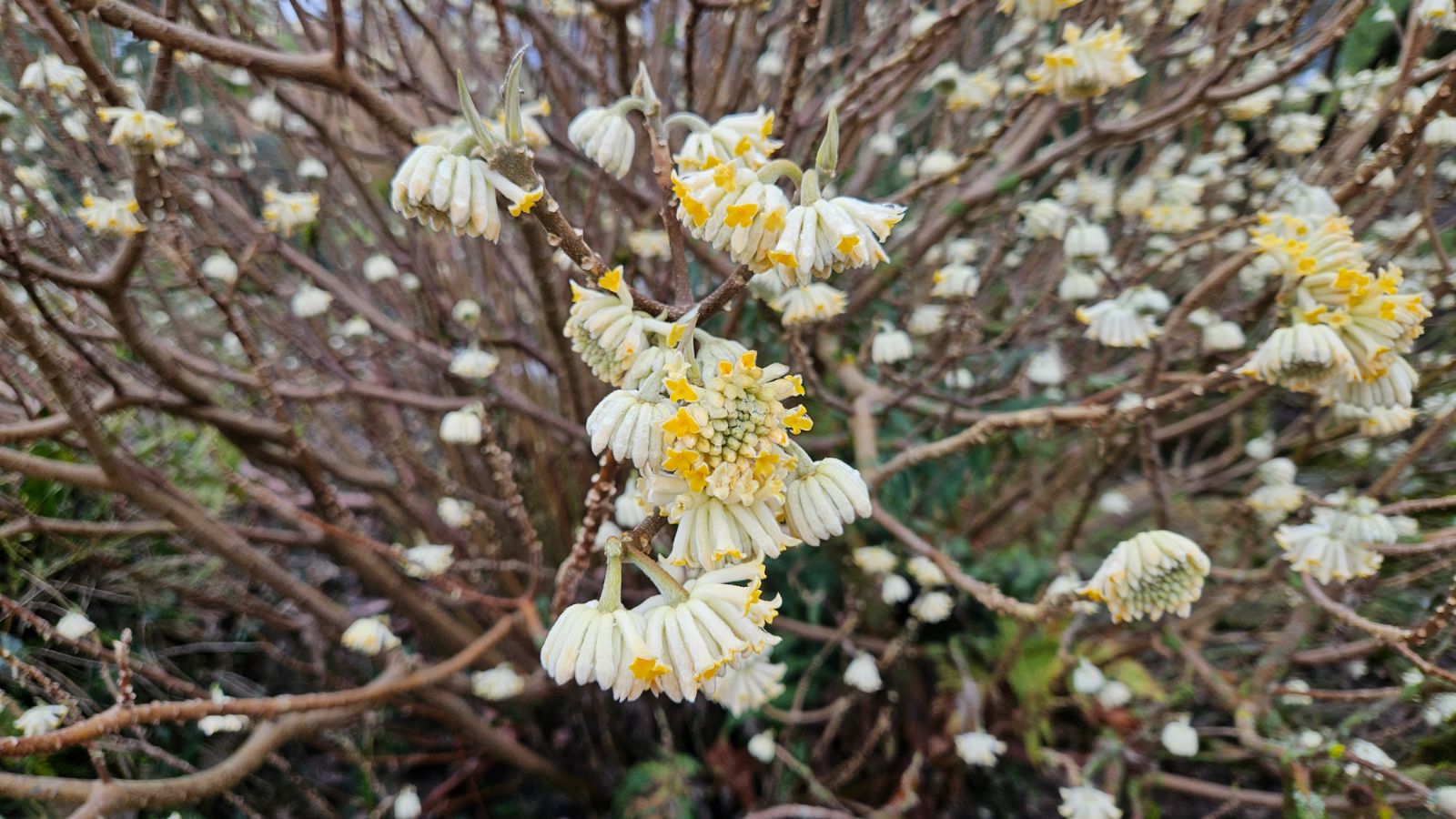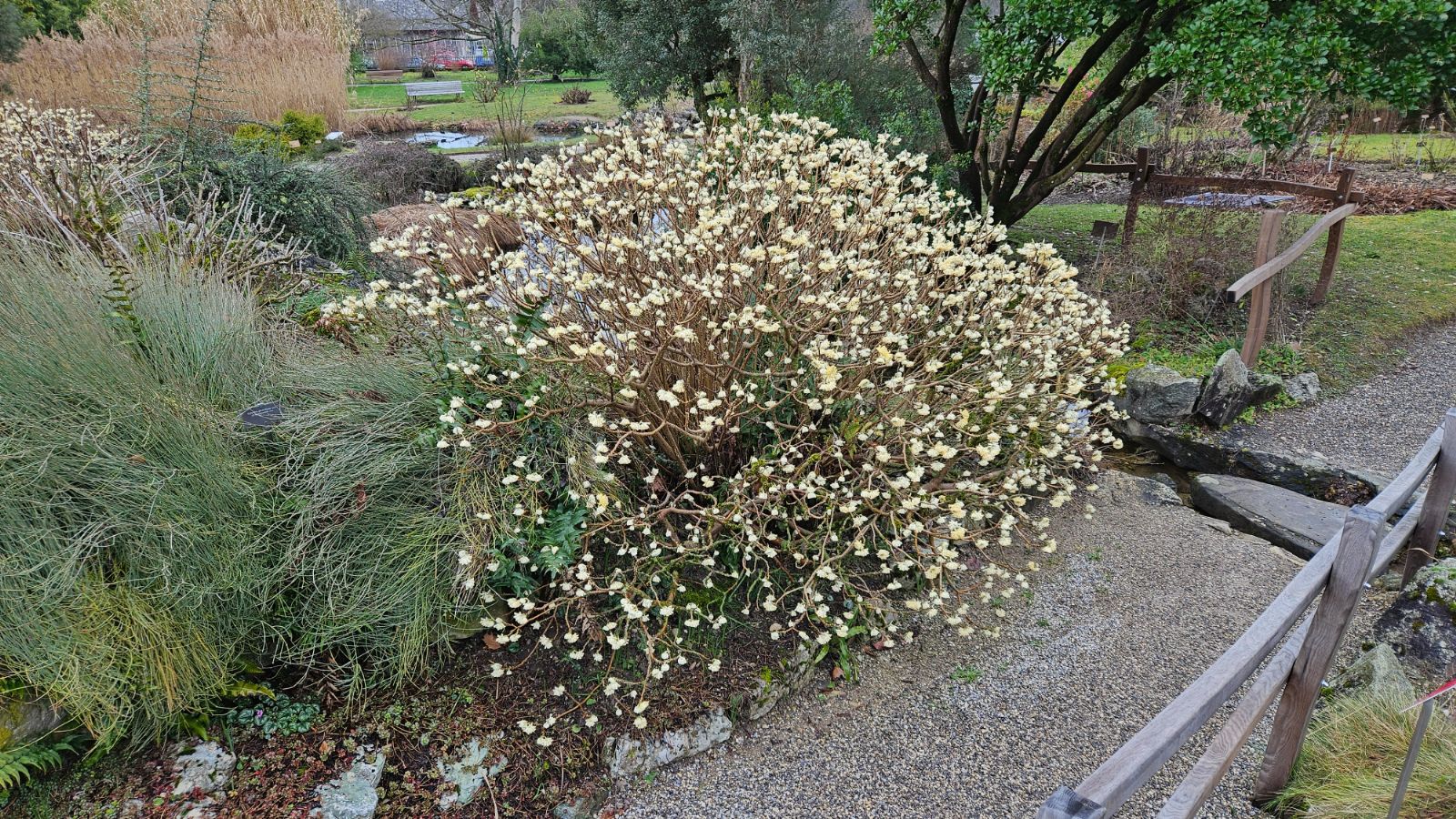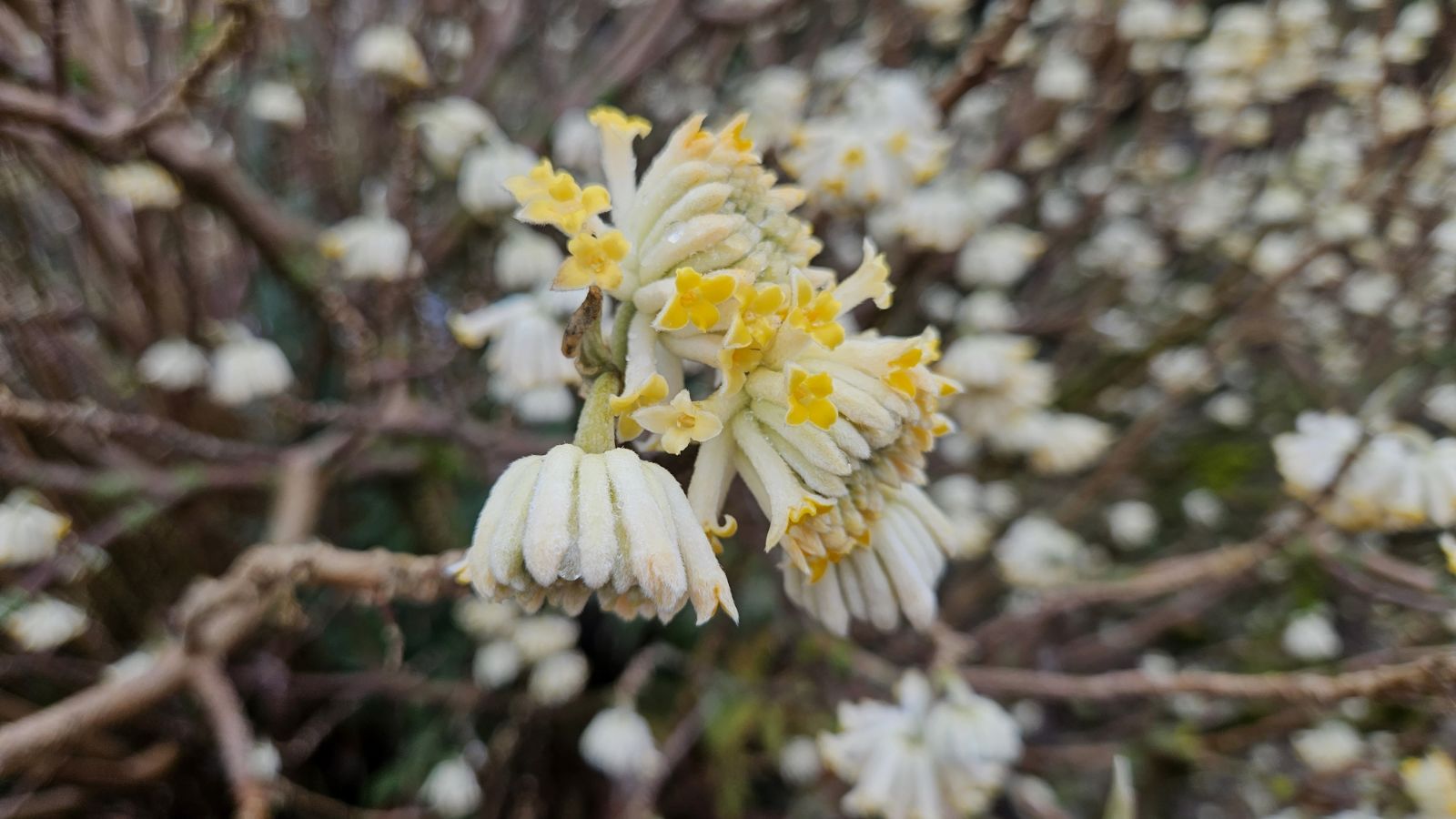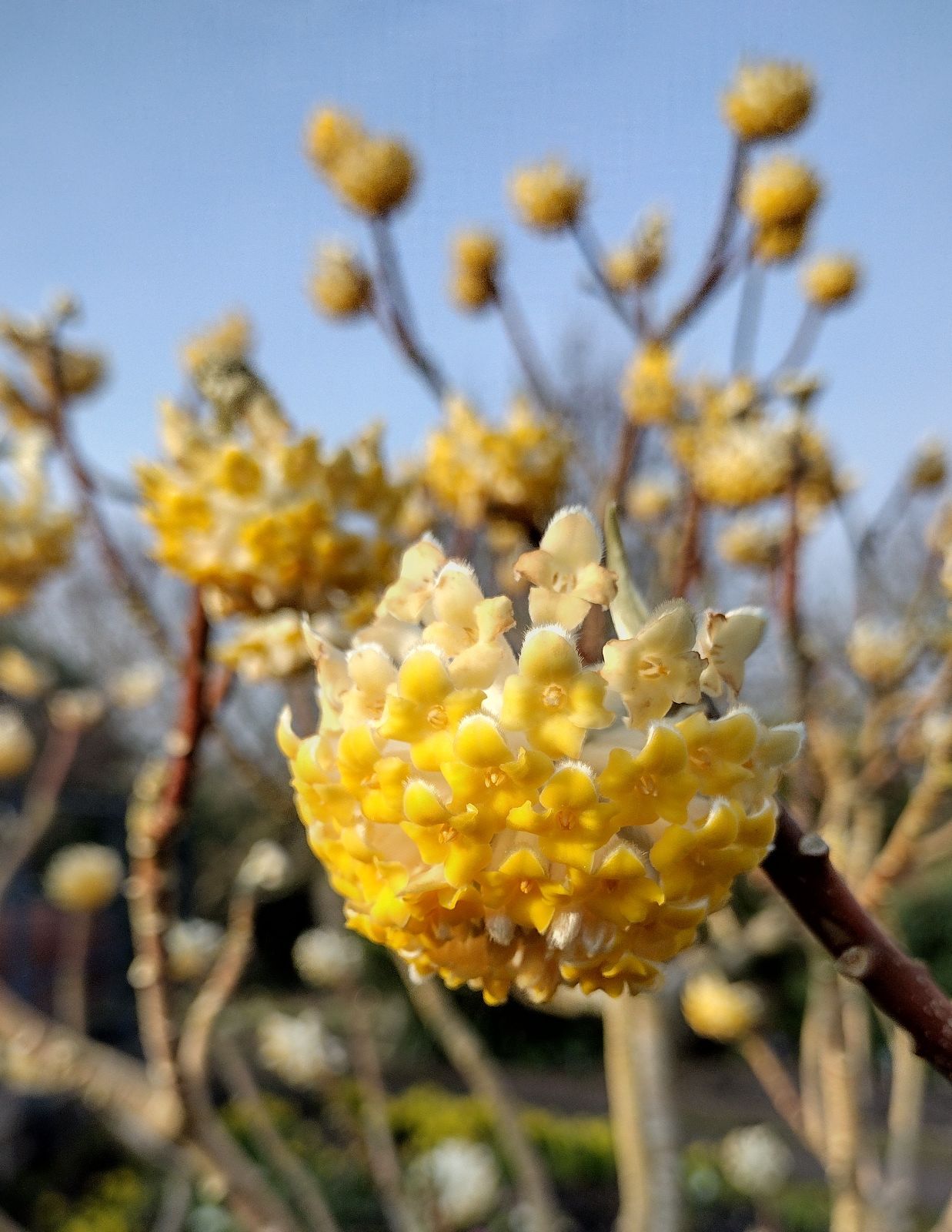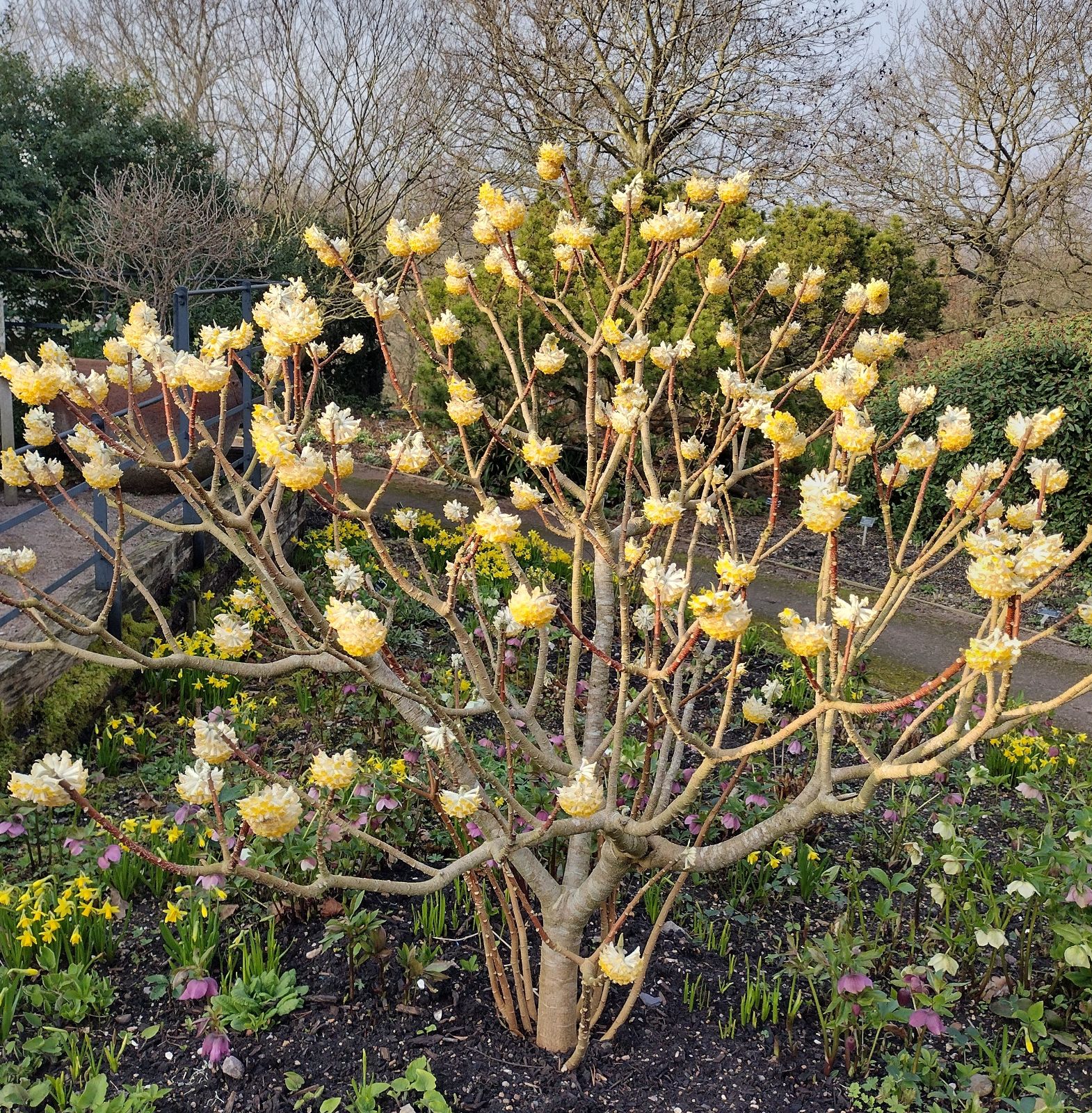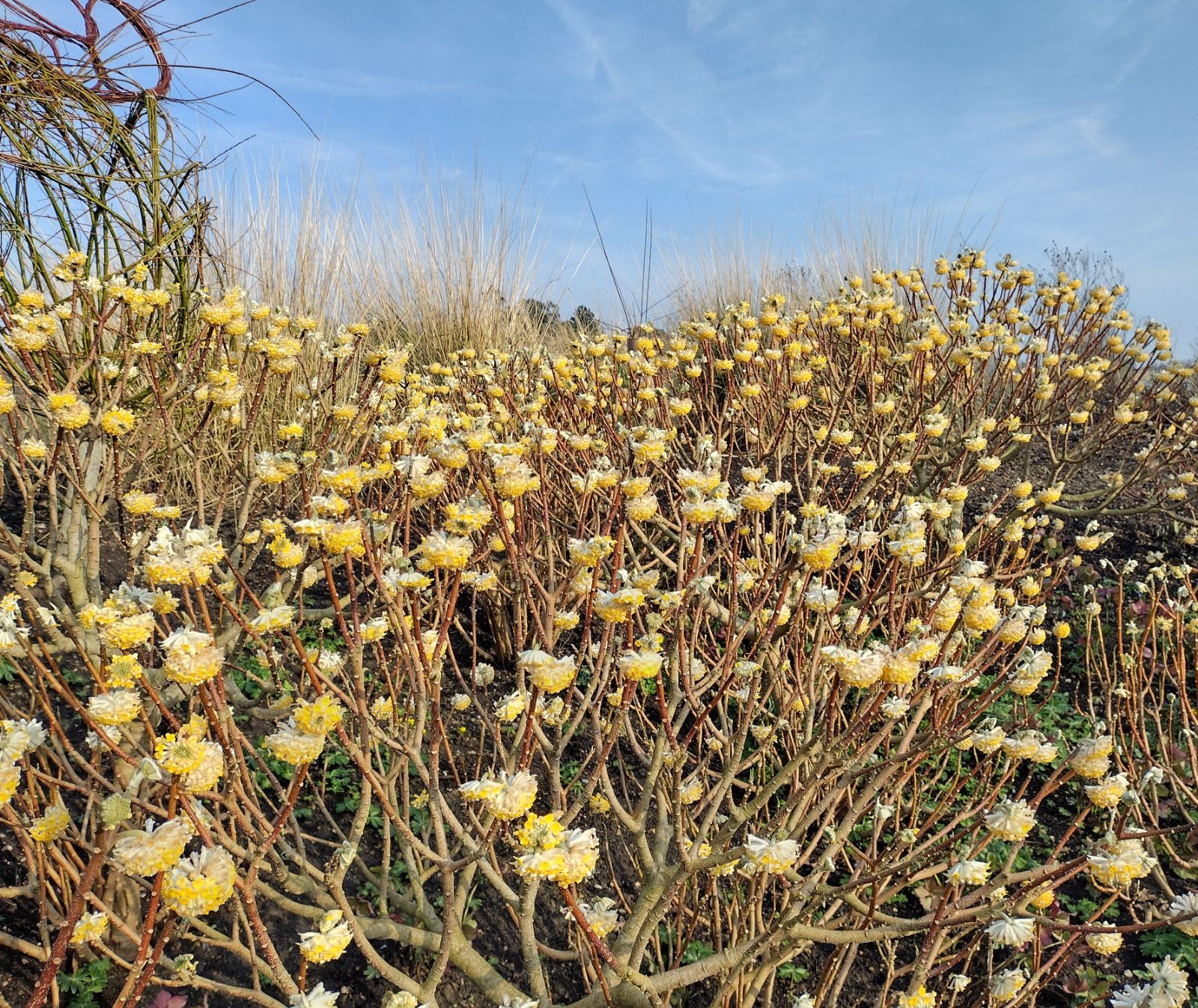Edgeworthia chrysantha
Credits
Article from Bean's Trees and Shrubs Hardy in the British Isles
Recommended citation
'Edgeworthia chrysantha' from the website Trees and Shrubs Online (treesandshrubsonline.
Genus
Synonyms
- Edgeworthia papyrifera Sieb. & Zucc.
A deciduous shrub up to 6 or 8 ft high; young shoots clothed at first with silky hairs, becoming glabrous and olive green, extraordinarily tough and supple. Leaves alternate, narrowly oval to narrowly ovate, pointed, wedge-shaped at the base, entire, 3 to 51⁄2 in. long, 3⁄4 to 2 in. wide, dark dull green and glabrous or with scattered hairs above, greyish green beneath and clothed with appressed silky hairs when young; stalk 1⁄4 to 5⁄8 in. long. Flowers slightly fragrant, scarcely stalked, produced in February and March, forty to fifty packed together in a usually globose terminal head measuring 1 to 11⁄2 or even 2 in. in width; main-stalk 1⁄2 in. long. As in Daphne the flower has only one floral envelope, which is called the calyx or perianth. This is tubular, 1⁄2 to 3⁄4 in. long, slender, expanding at the apex into four rounded lobes which are deep yellow. The outside of the tube is entirely clothed with long, white silky hairs. Stamens eight, in two row of four.
Native of China; introduced in 1845. It has long been cultivated in Japan for the manufacture of a high-class paper used for currency but is not indigenous there. It has not proved hardy at Kew, but can be grown outside in the milder counties and in maritime districts. Although the flowers are mostly covered with white silky hairs, the rich cowslip yellow of the lobes gives a pleasing touch of colour, especially at the early season when they appear. The young twigs are so remarkably supple that they can easily be tied into knots. A specimen in Roath Park, Cardiff, planted in 1957–8, was over 7 ft high in 1966 and suffered no damage in the winter of 1962–3 (Gard. Chron., June 1, 1966, p. 558).
E. gardneri (Wall.) Meissn. Daphne gardneri Wall. – A native of the Himalaya from Nepal and Sikkim. It is closely akin to E. chrysantha but is evergreen and the leaves are not, on the whole, so large. The flowers are yellow and fragrant, but the hairs on the outside are shorter and less silky. It has long been cultivated in the greenhouses at Kew, but is not so hardy as E. chrysantha. The flowers turn black with drying. Bot. Mag., t. 7180.
'Grandiflora'
‘Grandiflora’ is larger in all its parts, not just the flowers, forming a robust stocky shrub with noticeably thick stems. The scent from the large dense inflorescences of rich yellow flowers is intense.

